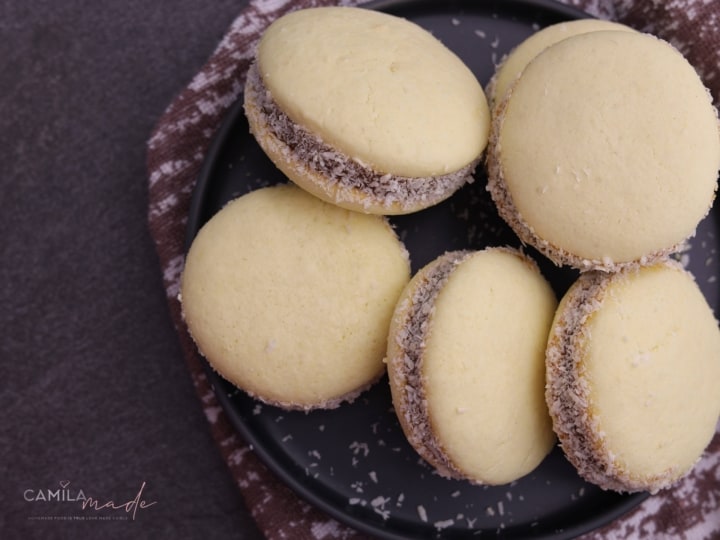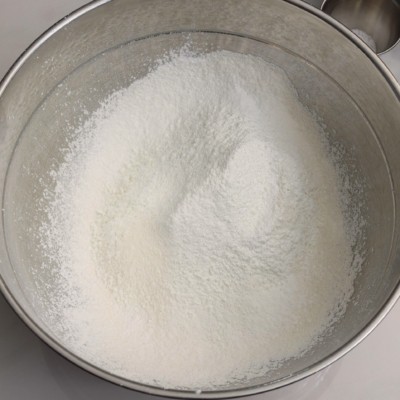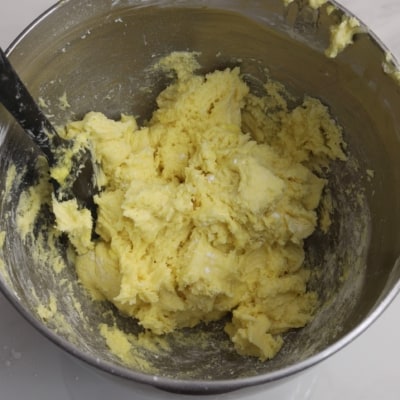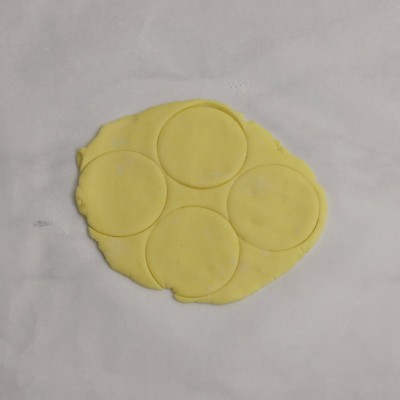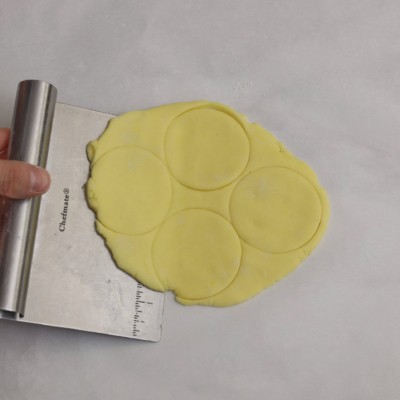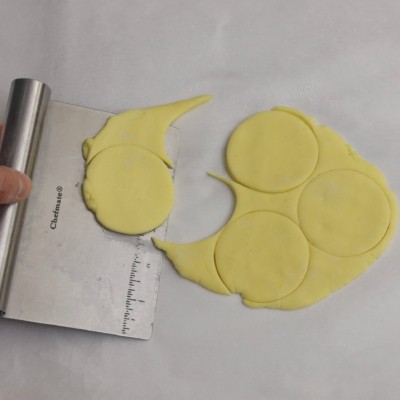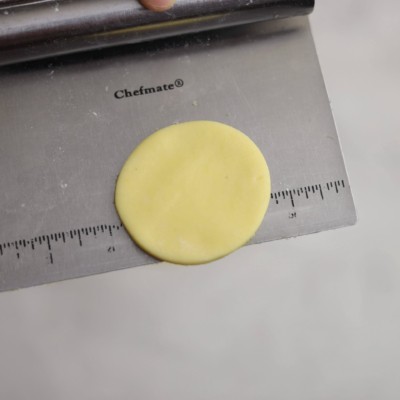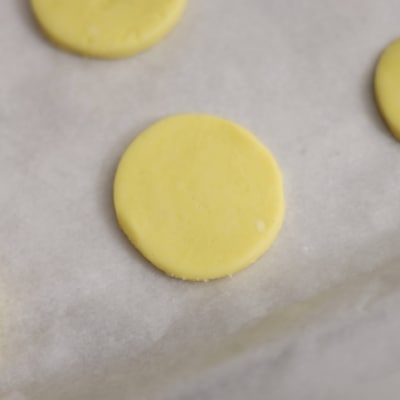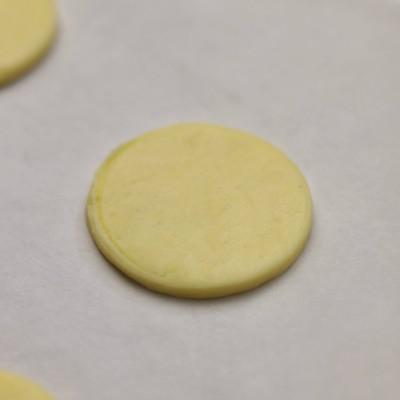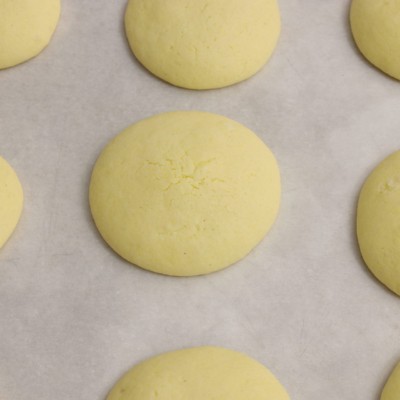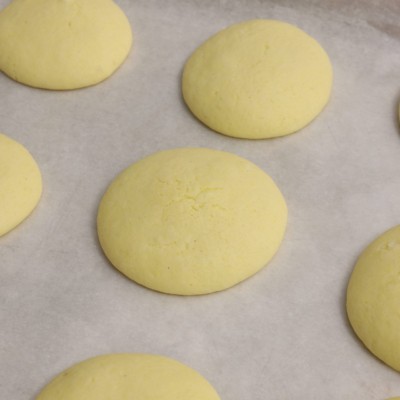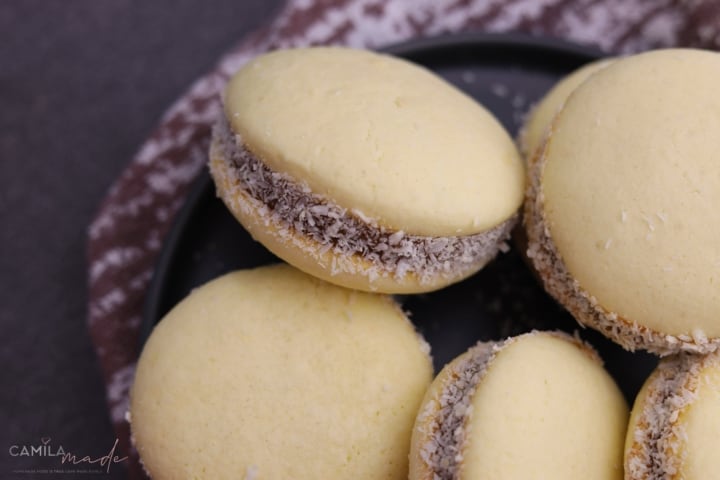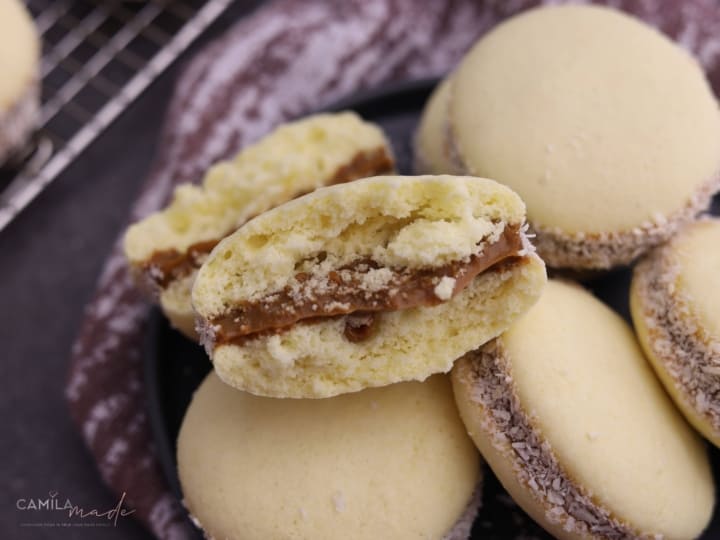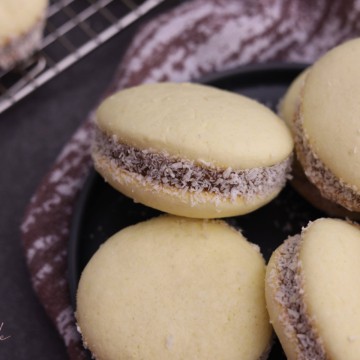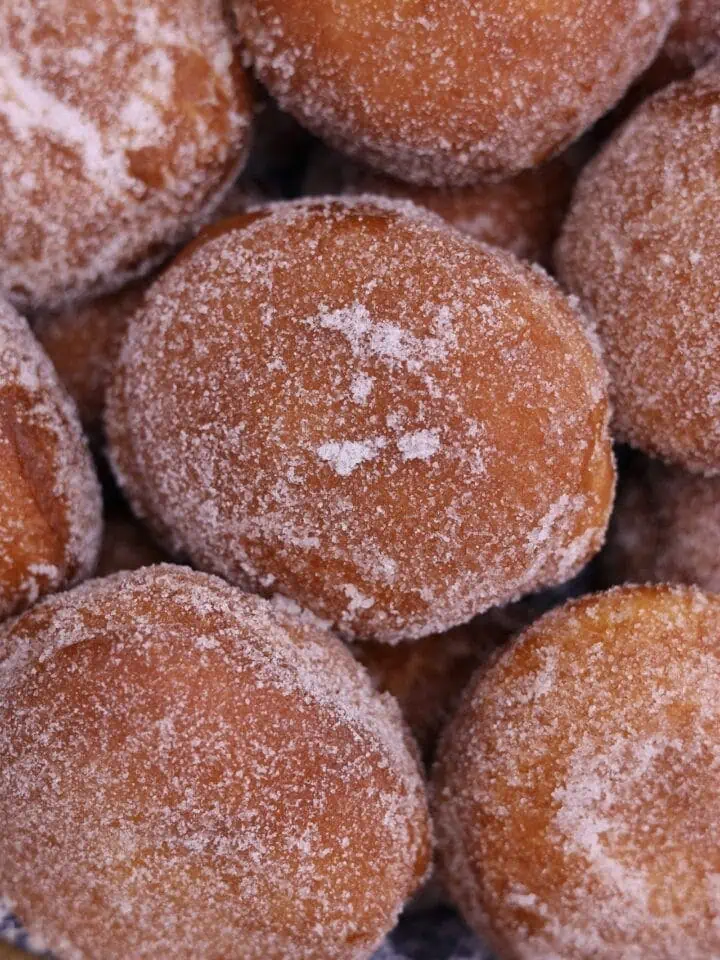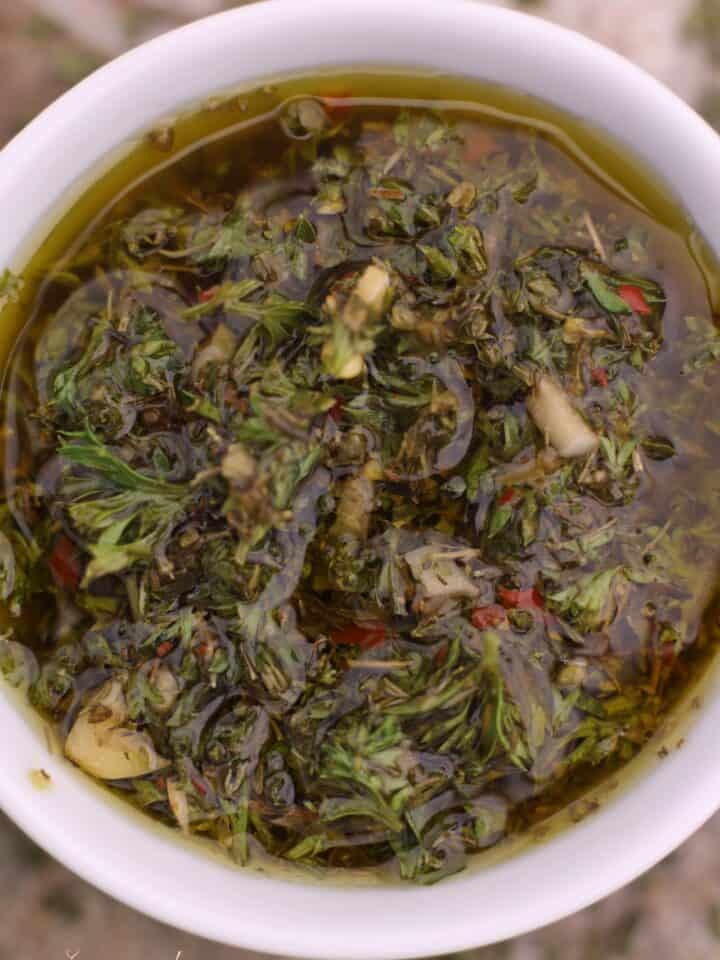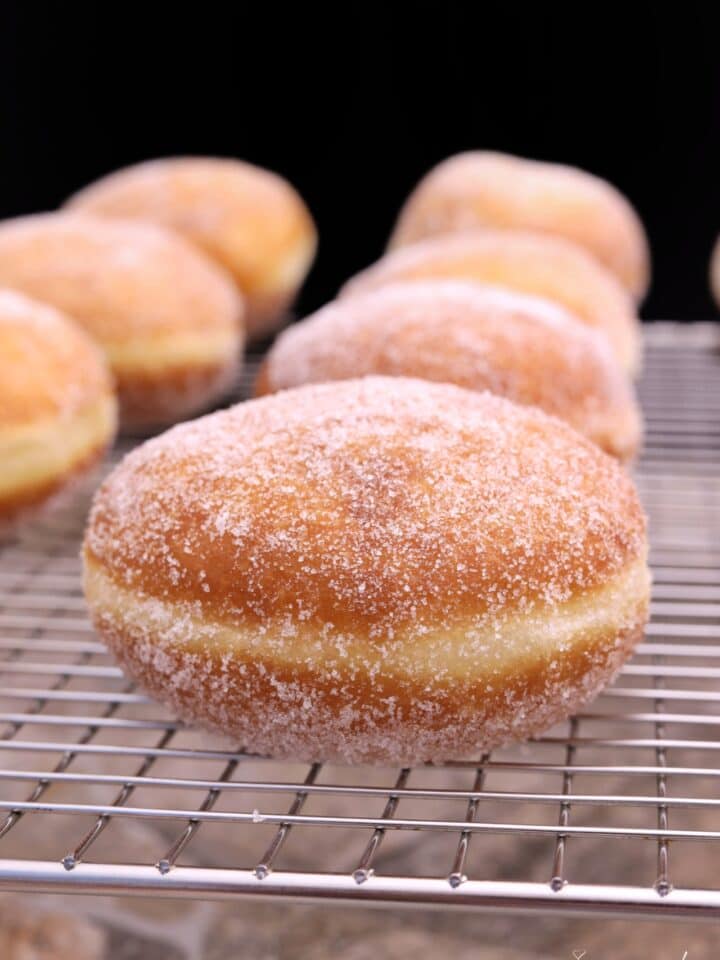Looking for a delicious and unique cookie recipe to add to your collection? These amazing Alfajores are sure to impress!
These beloved cookies are a staple of South American cuisine and feature two delicate, buttery cookies that melt in your mouth, filled with rich and creamy Dulce de Leche and finished with a sprinkle of unsweetened shredded coconut.
They offer an irresistible combination of sweetness and texture, making them perfect for any time of day, whether you're looking for a sweet treat with your morning coffee or tea, a tasty afternoon snack, or a decadent dessert.
The best part? This Alfajores recipe is quite easy to make, even for beginners. With simple ingredients and basic techniques, you can quickly whip up a batch of these delectable treats.
So whether you're looking for a new and exciting cookie recipe to add to your repertoire or want to try something new and delicious, these Alfajores will satisfy you. So why wait? Get baking and discover the magic of these delectable treats today!😉
How to Make Alfajores
Note: The full instructions are provided on the recipe card below.
Sift the cornstarch, baking powder, flour, and salt; set aside. In a stand mixer bowl fitted with a paddle attachment, at medium-high speed, cream the unsalted butter, salt, and confectioners' sugar until light, smooth, and creamy for about 3 minutes.
Beat in pure vanilla extract and clear vanilla; you can also add the optional lemon zest at this step. Beat in the egg yolks one at a time and mix briefly to incorporate until smooth, scraping down the sides of the bowl with a rubber spatula as needed.
Reduce the mixer speed to medium-low and gradually beat the flour mixture until the dough comes together; do not over-mix, or the cookies will turn out tough.
Form the dough into two disks, wrap tightly in plastic wrap, and refrigerate until firm, about 1 to hours.
(If you don't want to bake the alfajores right away, you can wrap the cookie dough in plastic wrap, store it in an airtight container, refrigerate it for up to three days, or freeze it for up to one month).
Position racks in the upper and lower thirds of the oven and preheat to 350°F. Line 2 baking sheets with parchment paper; set aside. Take the dough out of the fridge and let it sit on the counter for a few minutes to soften slightly for easy rolling.
Sandwich 1 disk of dough between 2 sheets of parchment and roll the dough ¼ inch thick.
Cut out rounds using a 2 ½-inch cookie or biscuit cutter and put them on the prepared baking sheets about 1 inch apart (about 12 cookies per sheet). Repeat with the second disk of dough.
(If the dough becomes too warm, put it back into the fridge for a few minutes. Then, re-roll the remaining scraps and repeat the process).
Bake the alfajores, rotating the baking sheets halfway through until set. The underside of the alfajores appears lightly golden brown but has not taken on any color on top for 8 to 10 minutes.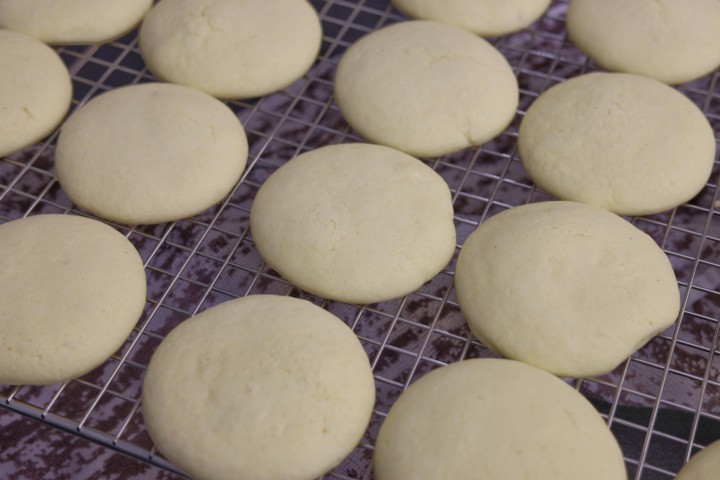
Let the alfajores cool on the sheets for 3 minutes, then transfer them to a wire rack to cool completely. The cookies can be stored at room temperature in an airtight container for up to 3 days.
How to Assemble
Scoop the Dulce de Leche in a piping bag with a plain tip.
Pipe a generous amount of Dulce de Leche on one-half of the cookies and use the remaining cookies to top them, creating a sandwich by pressing gently until the caramel filling reaches the edges; you could use a butter knife if you prefer.
Roll the edges in unsweetened shredded coconut. Alternatively, dust them with powdered sugar or dip them in melted chocolate. Then, enjoy the Alfajores with a tall cup of cold milk!😋🥛
Related Recipes:
- Guava Thumbprint Cookies
- Peanut Butter Cup Cookies
- Chocolate Thumbprint Cookies with Dulce de leche
- Soft Molasses Cookies
- Peanut Butter Cookies
- Peanut Butter Blossoms
Recipe
Easy Alfajores
Tools
Ingredients
For the Alfajores:
- 100 gr. (¾ cup) all-purpose flour
- 400 gr. (3-⅓ cups) cornstarch
- 15 gr. (1 tablespoon) baking powder
- 150 gr. (1-¼ sticks / 10 tablespoons) unsalted butter, room temperature
- 150 gr. (1-¼ cups) Powdered sugar
- 9 large Egg yolks , room temperature
- 1 tablespoon pure vanilla extract
- 1 tablespoon clear vanilla or pure vanilla extract
- ¼ teaspoon kosher salt
- Zest of 1 lemon , optional
For the filling:
- (2) 13.4 oz/ 380g Canned Dulce de Leche (I used La Lechera brand)
- 100 g (1 cup) Unsweetened Shredded coconut ( I used Bob's Red Mill Brand )
Instructions
- In a medium bowl, sift the cornstarch, baking powder, and flour; set aside. In a stand mixer bowl fitted with a paddle attachment, cream the unsalted butter, salt, and confectioners' sugar at medium-high speed until light, smooth and creamy for about 3 minutes. Beat in pure vanilla extract and clear vanilla; you can also add the optional lemon zest at this step.
- Beat in the egg yolks one at a time, and mix briefly to incorporate until smooth, scraping down the sides of the bowl with a rubber spatula, as needed.
- Reduce the mixer speed to medium-low and gradually beat the flour mixture until the dough comes together; do not over-mix, or the cookies will turn out tough.
- Form the dough into two disks, wrap tightly in plastic wrap and refrigerate until firm, about 1 hour. (If you don't want to bake the alfajores right away, you can wrap the cookie dough in plastic wrap, store it in an airtight container and refrigerate it for up to three days, or freeze it for up to one month).
- Position racks in the upper and lower thirds of the oven and preheat to 350°F. Line 2 baking sheets with parchment paper; set aside.
- Take the dough out of the fridge and let it sit on the counter for a few minutes to soften slightly for easy rolling. Sandwich 1 disk of dough between 2 sheets of parchment and roll the dough ¼ inch thick.
- Cut out rounds using a 2 ½-inch cookie or biscuit cutter and put them on the prepared baking sheets about 1 inch apart (about 12 cookies per sheet). Repeat with the second disk of dough. (If the dough becomes too warm at any point, put it back into the fridge for a few minutes. Then, re-roll the remaining scraps and repeat the process).
- Bake the alfajores, rotating the baking sheets halfway through, until set, and the underside of the alfajores appears lightly golden brown but has not taken on any color on top, 9 to 10 minutes. Let the alfajores cool on the sheets for 3 minutes, then transfer to a wire rack to cool completely. The cookies can be stored at room temperature in an airtight container for up to 3 days.
How to Assemble the Alfajores
- Scoop the Dulce de Leche in a piping bag fitted with a plain tip. Pipe a generous amount of Dulce de Leche on one-half of the cookies and use the remaining cookies to top them, creating a sandwich by pressing gently until the caramel filling reaches the edges; you could use a butter knife if you prefer.
- Roll the edges in unsweetened shredded coconut. Alternatively, you can dust them with powdered sugar or dip them in melted chocolate. Then, enjoy the Alfajores with a cup of cold milk!
Notes
All nutritional information is based on third-party calculations and is only an estimate. Each recipe and nutritional value will vary depending on the brands you use, measuring methods, and portion sizes per household.

